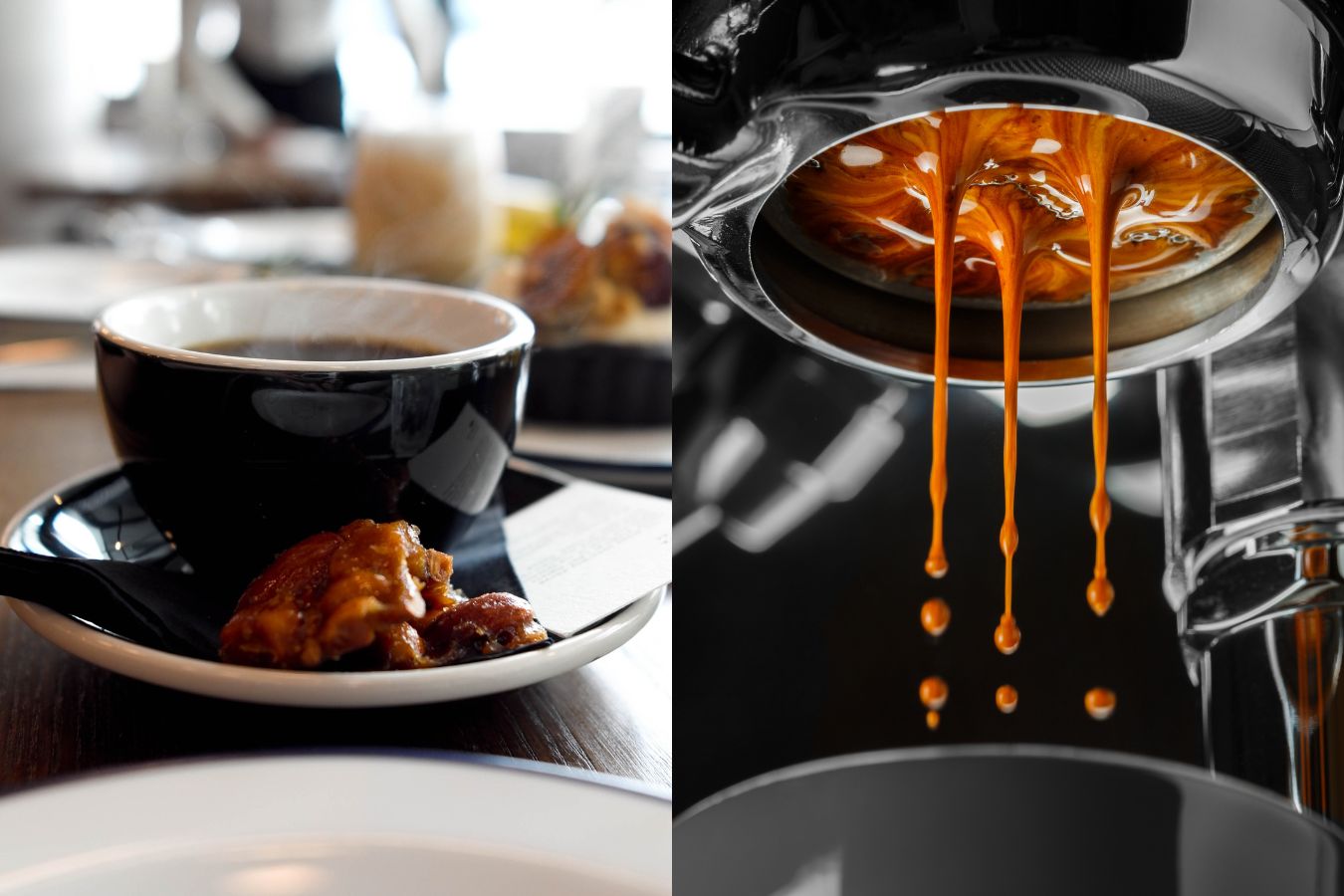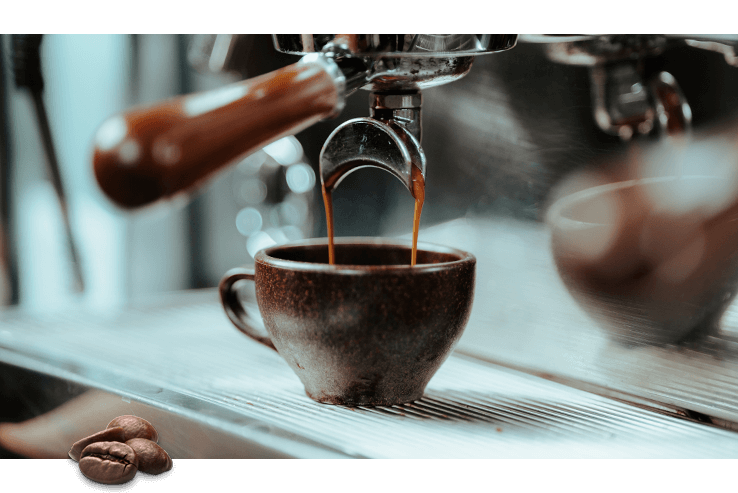Coffee Beans 101: Everything You Required to Find Out About Espresso and Blended Coffee Beans
When it comes to coffee, comprehending the subtleties of coffee and mixed beans can change your day-to-day cup. From the growing process to toasting strategies, every action plays a role in your coffee experience.
Comprehending Coffee Beans: Kinds and Varieties
When diving into the world of coffee, comprehending the types and selections of coffee beans is necessary for each lover. You'll primarily encounter 2 primary species: Arabica and Robusta. Arabica beans are understood for their smooth, complex tastes and reduced caffeine material, making them a favored among coffee fanatics. On the various other hand, Robusta beans load a strike with a more powerful, much more bitter preference and higher caffeine levels, frequently utilized in espresso blends.
Ethiopian Yirgacheffe offers brilliant flower notes, while Colombian beans provide a well-balanced flavor account. By familiarizing yourself with these beans and their tastes, you'll boost your coffee experience and make even more educated selections in your brewing journey.
The Growing Process: From Seed to Bean
When you check out the journey of coffee, everything beginnings with seed choice techniques that set the structure for high quality. From there, farming and gathering play essential roles in making certain the beans thrive. Handling methods change those collected cherries right into the coffee beans you love.
Seed Option Strategies
Selecting the best seeds is vital for producing top quality coffee beans, as it lays the structure for the entire expanding process. Pay attention to the seed's age and storage conditions, as fresh seeds often tend to germinate much better. Think about the condition resistance of different selections, as this can considerably influence your return.
Cultivation and Harvesting
As you nurture your coffee seeds into prospering plants, comprehending the growing and harvesting procedure is important for attaining the best taste and top quality. Start by planting your seeds in well-draining soil, ideally in a shaded area to shield them from straight sunlight.
When it comes time to harvest, search for ripe cherries, which usually transform a dynamic red. Hand-picking is often the ideal technique to guarantee only the ripest cherries are chosen. Timing is important; gathering also early or far too late can impact the flavor profile of your beans. Embrace patience and treatment, as this is where quality starts.

Processing Techniques Clarified
As soon as you've harvested your coffee cherries, the following important action is processing them to transform those dynamic fruits right into the beans you'll make. There are two major approaches: the damp process and the completely dry process. In the completely dry procedure, you spread the cherries out in the sun to dry, permitting the fruit to ferment and pass on one-of-a-kind tastes to the beans. On the various other hand, the damp process entails eliminating the fruit immediately and fermenting the beans in water, resulting in a cleaner taste. After handling, the beans are hulled, sorted, and usually dried out again. Each technique impacts the flavor profile, so explore both can help you find your preferred brew. Recognizing these methods is key to appreciating your coffee experience.
Toasting Methods: Exactly How Flavor Is Established
When it pertains to roasting coffee beans, comprehending roast levels is key to disclosing their distinct flavors. Each roasting strategy impacts the fragrance and enhances the taste growth procedure, giving you a richer coffee experience. Let's explore how these elements come together to raise your daily brew.
Roast Degrees Discussed
Roast levels play an essential duty in forming the taste account of your coffee. You'll delight in intense acidity and fruity notes when you pick a light roast. As you relocate to a medium roast, you'll discover an equilibrium of sweet taste and intricacy, commonly highlighting chocolate or caramel flavors. Dark roasts, on the various other hand, supply vibrant, smoky attributes with less level of acidity, making them robust and rich. Each level arises from various roasting times and temperatures, affecting the beans' chemical make-up. By understanding these levels, you can better choose a coffee that matches your preference preferences. Experiment with various roasts to uncover which one reverberates with you, improving your total coffee experience and enjoyment.
Effect On Aroma
The roast level not just influences the preference of your coffee but additionally greatly impacts its fragrance. When you choose a light roast, you'll frequently see intense, floral notes that can make your coffee smell lively and fresh. As the beans dim, the fragrance shifts; a tool roast highlights extra well balanced, caramelized aromas, while a dark roast has a tendency to include strong, great smoky touches. Each roasting method releases various volatile compounds, forming just how your coffee smells. In addition, the quality of the beans plays a vital role; freshly baked coffee launches more aromatic oils, enhancing that enticing scent. So, take note of the roast level-- it's vital to disclosing the complete aromatic experience of your brew.
Flavor Growth Refine
As you explore the taste growth process, you'll find that roasting strategies play an essential function in shaping the taste profile of your coffee. The roasting temperature and time directly influence the level of acidity, sweet taste, and resentment of the beans. Light roasts retain even more of the bean's initial tastes, highlighting fruity and flower notes. Medium roasts balance acidity and body, supplying an all-around taste. Dark roasts, on the other hand, draw out strong, great smoky qualities click for more while reducing the bean's inherent top qualities. During roasting, chain reactions, like the Maillard response and caramelization, transform the beans and improve their intricacy. Experimenting with various roasting levels can aid you locate your best mixture, so do not wait to taste and uncover the abundant spectrum of flavors!
Espresso vs. Blended Coffee: Key Differences
Coffee and combined coffee each offer one-of-a-kind experiences that deal with different preferences and choices. Espresso is a concentrated coffee brewed by requiring warm water with finely-ground coffee beans, causing an abundant, bold taste and a creamy layer of crema on the top. It's commonly taken pleasure in as a shot or utilized as a base for beverages like cappucinos and coffees.
On the various other hand, combined coffee integrates different beans from various areas, producing a more balanced taste account. You'll commonly find blends that highlight sweet taste, body, or level of acidity, making them flexible for different brewing techniques. While espresso concentrates on intensity, blended coffee might use a more comprehensive series of flavors that can alter with each sip.
Inevitably, your choice between coffee and combined coffee boils down to your personal preference. Whether you yearn for a leisurely cup or a quick shock, both choices have something tasty to provide.

Brewing Approaches: Unlocking the Perfect Mug
When it concerns developing coffee, finding the right approach can transform your experience and raise your mug. Each brewing strategy has its distinct beauty and can significantly influence your coffee's flavor and scent. Using a French press enables you to take pleasure in a full-bodied and abundant mixture, while a pour-over method supplies a tidy, bright cup with distinctive tastes.
If you prefer coffee, investing in a high quality maker can aid you understand the art of pulling shots. Alternatively, for benefit, a single-serve shell system uses rate without giving up taste.
Don't neglect regarding chilly brew, which provides a smooth, less acidic coffee perfect for warm days. Experiment with various methods to discover what resonates with your taste buds.
Tasting Notes: Identifying Flavor Profiles
Exactly how can you absolutely value your coffee if you don't understand what flavors to look for? Sampling notes are your guide to recognizing the intricate world of coffee. Some coffees might leave a chocolatey or sugar aftertaste, while others may have an intense, clean surface.
Consider the body of the coffee, also; is it light and airy or thick and syrupy? Do not neglect level of acidity; a brilliant acidity can add liveliness, while a low level of acidity could give a smoother experience. By determining check over here these flavor accounts, you'll grow your link with each mug, making coffee sampling a fascinating trip of discovery.

Tips for Picking and Storage Coffee Beans
Keeping and picking coffee beans properly can considerably enhance your brewing experience. Begin by choosing premium beans that fit your preference - SOE.
As soon as you have your beans, save them in an airtight container to stop exposure to air, light, and moisture. A dark, trendy location functions best, so avoid maintaining them in the refrigerator or fridge freezer, as this can introduce wetness. Just grind the quantity you need to preserve quality; entire beans preserve flavor longer than pre-ground coffee.
Lastly, try to utilize your beans within two to 4 weeks after opening up for peak taste. Adhering to these tips will guarantee your coffee remains pleasurable and savory, boosting your everyday mixture to brand-new elevations.
Regularly Asked Questions
The Length Of Time Do Coffee Beans Remain Fresh After Toasting?
Coffee beans remain fresh for concerning two weeks after toasting - SOE. You ought to store them in a closed container, far from light and dampness. Afterwards, their taste and fragrance start to lessen significantly

Can I Mix Different Coffee Bean Varieties?
Absolutely, you can blend different coffee bean ranges! Explore blends can improve flavors and produce a special preference profile. Simply ensure to balance the staminas and attributes of each variety for the very best results.
What Is the Suitable Work Size for Espresso?
For coffee, you'll want a fine grind dimension, about the structure of table salt. This allows excellent extraction, causing an abundant, flavorful shot. Experiment a little bit to find what suits your taste best!
Just How Does Altitude Affect Coffee Bean Flavor?
Elevation impacts coffee bean taste by influencing the growth rate and chemical composition. Higher elevations lead to slower growth, which improves acidity and complexity, giving your coffee a unique and dynamic taste you will not fail to remember.
Exist Decaffeinated Variations of Espresso Beans?
Yes, there are decaffeinated variations of espresso beans. You can take pleasure in a rich espresso flavor without the high levels of caffeine kick. Just search for "decaf" blends at your regional coffee bar or specialty shop.
Coffee Beans 101: Whatever You Need to Know Concerning Espresso and Blended Coffee Beans.
When diving into the world of coffee, comprehending the types and varieties of coffee beans is vital for every fanatic.When it comes to roasting coffee beans, understanding roast levels is vital to disclosing their unique flavors. Espresso is a concentrated coffee brewed by forcing hot water via finely-ground coffee beans, resulting in a rich, vibrant taste and a velvety layer of crema on top.On the various other hand, blended coffee combines numerous beans from different check my site areas, creating a more balanced taste profile.